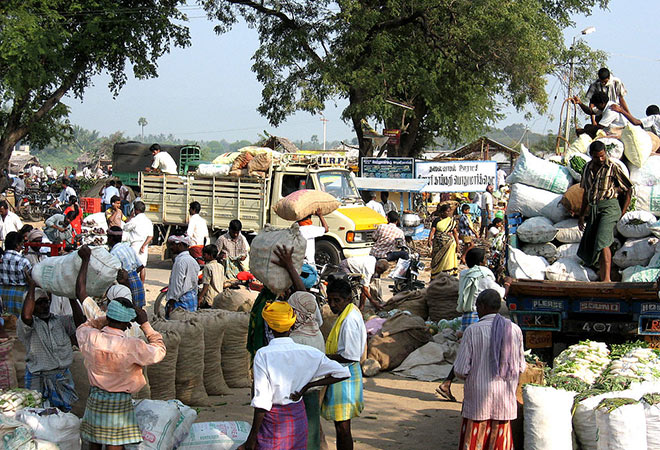The basic need of the human population is food, clothes and shelter. These are the essentials on which the complete civilisation rests. Initially whatever we do and earn is for providing ourselves with these three basic necessities. Luxury comes in later but somewhere down the line it also revolves around these three. And agriculture directly and indirectly holds the key to their availability. We all know farming is our food giver. Without it the ever growing human civilisation would have suffered from decline. It was superior consciousness that helped us survive in nature as we were able to domesticate ourselves and grow our own food. Before the advent of synthetic fabrics cotton was the chief crop which provided for our clothing needs. Also before modern construction majors came about houses were made from bamboo, soil, straw, etc. So, agriculture sector plays a strategic role in the process of economic development of a country.

Looking through the developmental history of England it is clear that Agricultural Revolution preceded the Industrial Revolution. In U.S.A. and Japan, also agricultural development has helped to a greater extent in the process of their industrialisation. Similarly, various under-developed countries of the world engaged in the process of economic development have by now learnt the limitations of putting over-emphasis on industrialisation as a means to attain higher per capita real income. “Thus industrial and agricultural developments are not alternatives but are complementary and are mutually supporting with respect to both inputs and outputs.” It is seen that increased agricultural output and productivity tend to contribute substantially to an overall economic development of the country, it will be rational and appropriate to place greater emphasis on further development of the agricultural sector.

Agriculture is the basic source of food supply for all the countries of the world—whether underdeveloped, developing or even developed. The leading industrialized countries of today were once predominantly agricultural while the developing economies still have the dominance of agriculture and it largely contributes to the national income. In India, still 28% of national income comes from this sector. Agro-based industries are solely dependent on agriculture for their primary products. The shortage of agricultural goods has its impact upon on industrial production and a consequent increase in the general price level. It will impede the growth of the country’s economy. The flour mills, rice shellers, oil & dal mills, bread, meat, milk products sugar factories, wineries, jute mills, textile mills and numerous other industries are based on agricultural products. The smooth development of commercial sector in agriculture requires creation of roads, market yards, storage, transportation railways, postal services and many others.
Agriculture sector requires less capital for its development thus it minimizes growth problem of foreign capital. Most of the developing countries of the world are exporters of primary products. These products contribute 60 to 70 per cent of their total export earning. Thus, the capacity to import capital goods and machinery for industrial development depends crucially on the export earning of the agriculture sector. If exports of agricultural goods fail to increase at a sufficiently high rate, these countries are forced to incur heavy deficit in the balance of payments resulting in a serious foreign exchange problem. During depression, industrial production can be stopped or reduced but agricultural production continues as it produces basic necessities of life. Thus it continues to create effective demand even during adverse conditions of the economy.
Agriculture provides employment opportunities for rural people on a large scale in underdeveloped and developing countries. It is an important source of livelihood. Generally, landless workers and marginal farmers are engaged in non-agricultural jobs like handicrafts, furniture, textiles, leather, metal work, processing industries, and in other service sectors. In India about 70.6% of total labour force depends upon agriculture. To reduce this inequality of income, it is necessary to accord higher priority to agriculture. The prosperity of agriculture would raise the income of the majority of the rural population and thus the disparity in income may be reduced to a certain extent.
All these facts help in determining how important agriculture is for the development and sustenance of the economy of a country. Agriculture is the road map for all the treasures that human civilisation wants to achieve. So, agriculture can be rightfully termed as ‘ The Mother of Economic Development.’
